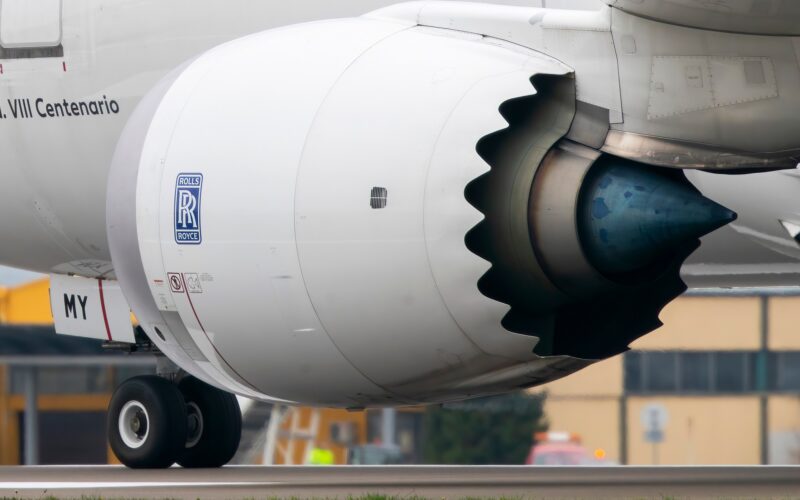The European Union Aviation Safety Agency (EASA) has issued an Airworthiness Directive (AD) to address a potential unsafe condition on the Rolls-Royce Trent 1000 engine, which affects the low-pressure turbine (LPT) stage 1 blade assemblies.
According to the AD, Rolls-Royce issued an Alert Non-Modification Service Bulletin (NMSB) Trent 1000 72-AK919, which affects several modifications of the same engine, exclusively used on the Boeing 787, prompting the directive.
According to the European regulator, the LPT stage 1 blade assemblies, Part Number (P/N) FW68788, consisting of a pair of blades welded together at the outer shroud, are affected by the latest directive. EASA pointed out that there have been reports of cracks and separation “in the weld region on a small number of affected parts during engine inspections”.
“If a significant number of blade pairs in a blade set are separated, this could change the vibration characteristics of the LPT stage 1 blade set and lead to the release of blade material during engine running,” EASA continued.
As a result, this could cause secondary damage to the LPT module and subsequent in-flight engine shutdown, which could result in “reduced control of the aeroplane”, the regulator added.
Inspections of the Trent 1000 LPT
EASA requires operators to inspect and, if needed, replace the affected parts.
Airlines will have to conduct inspections of the Trent 1000 LPT either in the shop or while the engine is still on the wing at LPT stage 1 blade assemblies before the part exceeds 30,000 Flight Hours (FH) since first being installed on the engine or within 90 days of the effective date of the AD. Thereafter, inspections must be carried out within intervals to not exceed 4,500 FHs.
For those parts that have reached or exceeded the FH threshold and are installed on engines in a repair shop on the effective date of the directive, EASA mandates inspections before the engine is released back into service.
However, if any cracks or separation are found while the inspections are done on an on-wing engine, but not on more than 32 blade pairs, inspection timings need to be adjusted according to the Rolls-Royce NMSB.
EASA said that operators will need to replace the affected parts with new LPT stage 1 blade assemblies during each shop visit after the effective date of the AD. However, the regulator has also allowed airlines to use serviceable parts on their engines.
The European authority defines serviceable LPT stage 1 blade assemblies as those not previously installed or have fewer than 30,000 FHs since their installation on an engine, as well as those that have passed an inspection. Meanwhile, a serviceable LPT disk “is one that meets the acceptance criteria as specified in the current Engine Manual T-Trent-10RR”.
The directive’s effective date is September 5, 2023.
According to ch-aviation.com data, 372 Boeing 787 aircraft are either actively flying, in storage, or in maintenance equipped with the Trent 1000 engine. This figure does not include the pair of ex-Norwegian Boeing 787-8s, registered as VP-CVL and VP-CVM, which were dismantled at Glasgow Prestwick Airport (PIK).

